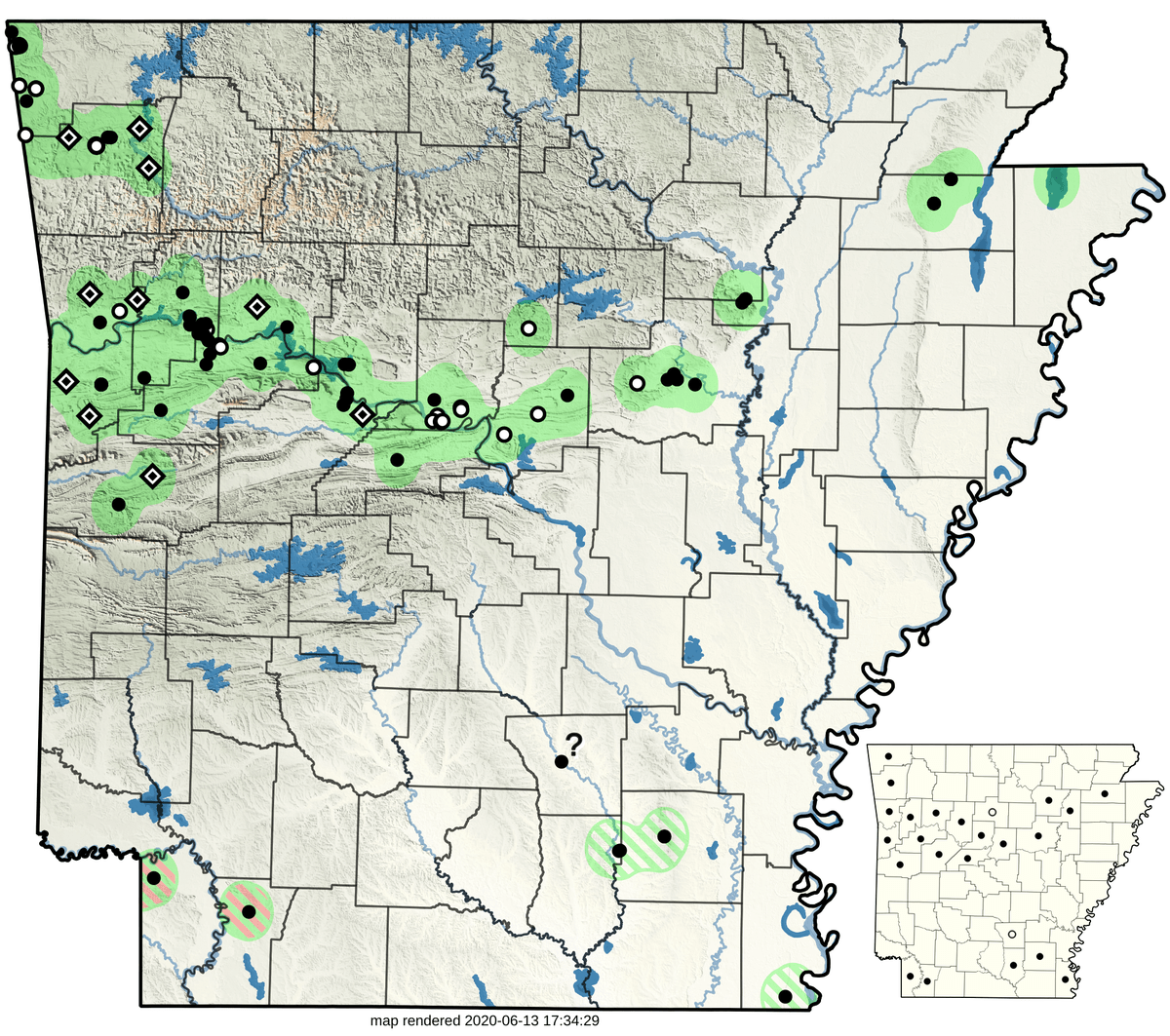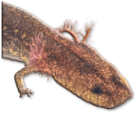Arkansas Herpetological Atlas 2019
This species is represented by 146 records from 13 sources: 86 museum ( ), 0 literature (
), 0 literature ( ), 0 research (
), 0 research ( ), and 50 observation (
), and 50 observation ( ), with 10 additional Trauth et al. (2004) locality points remaining unsourced (
), with 10 additional Trauth et al. (2004) locality points remaining unsourced ( ). It has been museum vouchered for 22 of 75 counties (
). It has been museum vouchered for 22 of 75 counties ( ), with 2 additional counties having other forms of reported occurrence (
), with 2 additional counties having other forms of reported occurrence ( ). Years of collection range from 1926 to present.
). Years of collection range from 1926 to present.
This species has shown declines throughout its range. In Arkansas, it seems relatively secure along the Arkansas Valley and in portions of northwest Arkansas. Urbanization and habitat alterations have presumably caused extirpation of localized historical populations in the vicinity of Fayetteville, Washington County (J. D. Willson, pers. comm.); Searcy, White County (T. J. Belford, pers. comm.); and Jonesboro, Craighead County. The spotty records from central Arkansas extending to the Missouri Bootheel, may be an artifact of a formerly more widespread distribution. Despite surveys in recent years, it has not been confirmed from southeast Arkansas since 1977 nor southwest Arkansas since 1940 and may well be extirpated from the southern third of the state. A couple of relatively recent confirmed reports from Louisiana (Boundy and Carr, 2017) offer some hope of this secretive species still persisting in isolated pockets from this portion of its range. A questionable record from Cleveland County (ANSP 26728 from 1960) is based on tadpoles, which are easily misidentified. An anecdotal observation circa 2015 comes from the vicinity of Big Lake National Wildlife Refuge, Mississippi County (K. J. Irwin, pers. comm.). The L. a. areolatus subspecies (■) has been ascribed to records from the southwest corner of the state, while those elsewhere as L. a. circulosus (■).















































